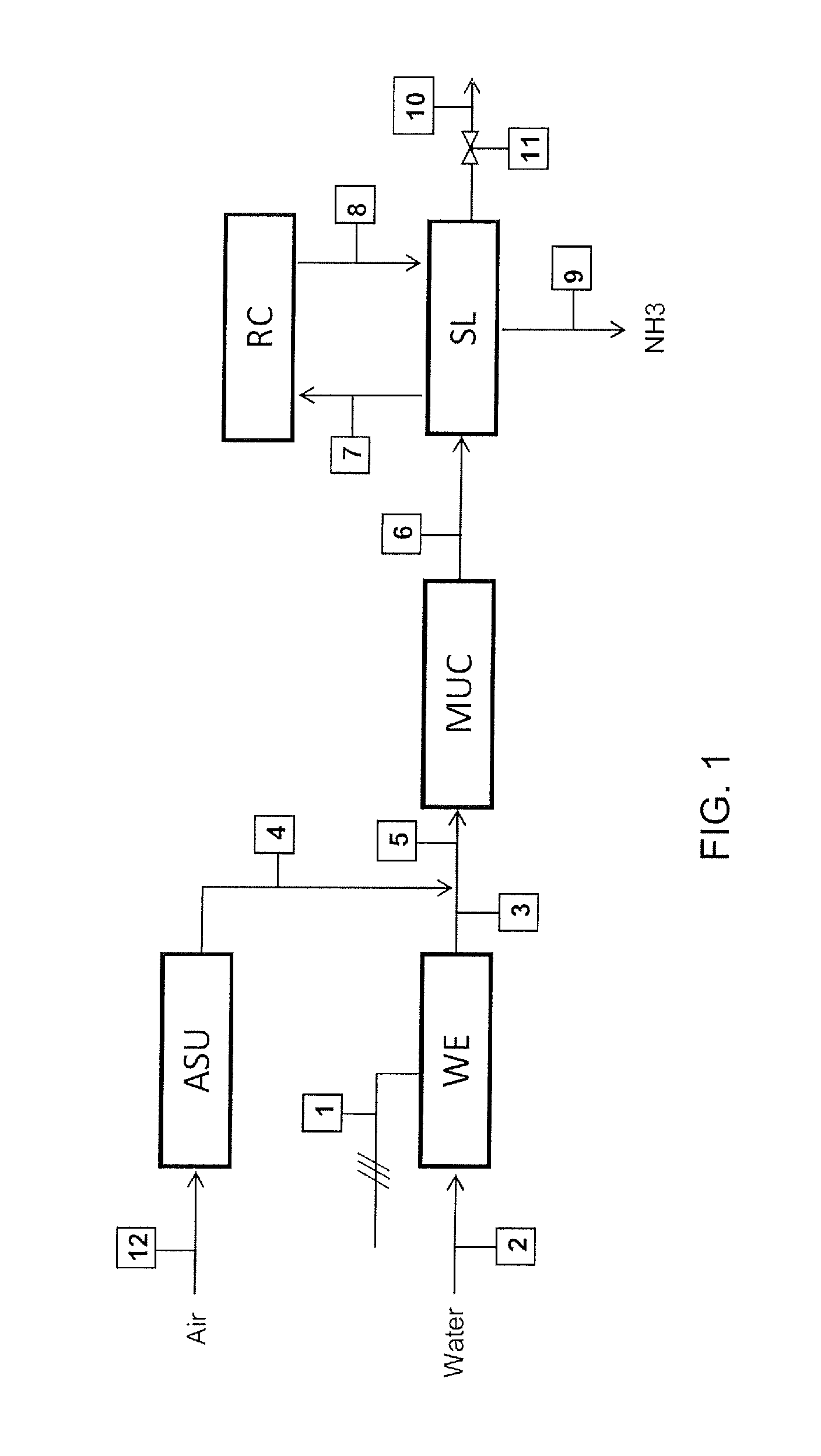Method for Load Regulation of an Ammonia Plant
a technology of ammonia plant and load regulation, which is applied in the direction of energy input, chemical/physical/physicochemical process, bulk chemical production, etc., can solve the problems of reactor vessel fatigue stress, reactor vessel overheating, and ammonia synthesis reactor cannot operate at the nominal elevated pressure (100-500 bar), so as to protect the reactor from overheating and improve the efficiency. , the effect of reducing the cost of energy
- Summary
- Abstract
- Description
- Claims
- Application Information
AI Technical Summary
Benefits of technology
Problems solved by technology
Method used
Image
Examples
example
[0046]The example refers to a small ammonia according to FIG. 1 plant rated at 120 kg / h of ammonia. The following table 1 show the composition of the streams in FIG. 1 when the plant operates at nominal (7 kmol / h equal to 120 kg / h of ammonia) output. The power input, in this case, is 1300 kW which means that specific energy consumption is 1300 / 120=10.8 kWh per kg of ammonia.
TABLE 1Stream No.3678910Molar Flow11156565 70.3(kmol / h)mol % H210074.56060—60mol % N2—252020—20mol % NH3——101010010mol % Ar—0.51010—10
[0047]The following table 2 refers to the same plant operated at a 10% load, which means 0.7 kmol / h or 12 kg / h of ammonia.
TABLE 2Stream No.3678910Molar Flow11.525250.70.01(kmol / h)mol % H210074.53030—30mol % N2—251010—10mol % NH3——101010010mol % Ar—0.55050—50
[0048]The hydrogen feed 3 and, hence, the make-up gas feed 6 are ten times smaller compared to table 1. To compensate for this lower feed, the molar flow rate of the purge gas (stream 10) is reduced by a factor greater than ten,...
PUM
| Property | Measurement | Unit |
|---|---|---|
| pressure | aaaaa | aaaaa |
| temperature | aaaaa | aaaaa |
| pressure | aaaaa | aaaaa |
Abstract
Description
Claims
Application Information
 Login to View More
Login to View More - R&D
- Intellectual Property
- Life Sciences
- Materials
- Tech Scout
- Unparalleled Data Quality
- Higher Quality Content
- 60% Fewer Hallucinations
Browse by: Latest US Patents, China's latest patents, Technical Efficacy Thesaurus, Application Domain, Technology Topic, Popular Technical Reports.
© 2025 PatSnap. All rights reserved.Legal|Privacy policy|Modern Slavery Act Transparency Statement|Sitemap|About US| Contact US: help@patsnap.com


